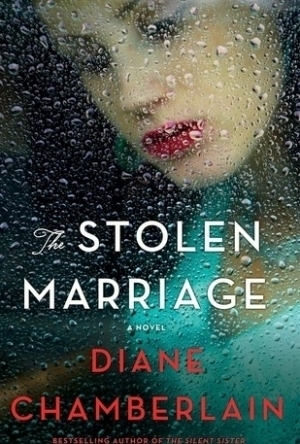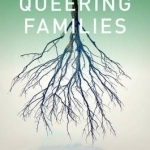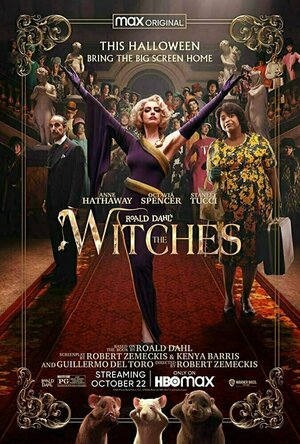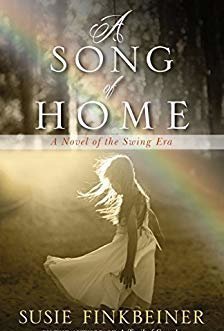Sarah (7800 KP) rated The Witches (2020) in Movies
Mar 6, 2021
This time round, the story has been transported to late 1960s Alabama. It follows a unnamed boy (named in the credits as simply ‘Hero Boy’), played by Jahzir Bruno, and his grandma (Octavia Spencer) as they encounter a witch in their home town, prompting her to whisk him away to a seaside resort. Unbeknownst to them, this seaside resort is also where the Grand High Witch (Anne Hathaway) is due to unveil her dastardly plans to transform the world’s children. In his bids to thwart the witches plans, Hero Boy bumps into some familiar names, greedy English boy Bruno Jenkins (Codie-Lei Eastick) and put-upon hotel manager Mr Stringer (Stanley Tucci).
I was very sceptical about this in general, and while I think my scepticism was most definitely warranted, I was at least pleasantly surprised that moving the action from England to 60s America worked. It gives the film a different vibe with a new setting (with some very good costume and set design too), yet still keeping the same base story. However I’m afraid that’s the only good change that they’ve made in this entire remake. The 60s setting works, but the hotel itself lacks the beauty and grandeur of the hotel in the original. Gone are the imposing shots of a beautiful old hotel set on top of a cliff with its gorgeous landscapes (which incidentally is a real life hotel called The Headland which is on my travel wish list), and instead replaced with something that looks good on the surface, but is sadly lacking in realism and has obviously been entirely computer generated.
And this is the major problem with The Witches (2020), it’s over reliance and overuse of CGI. Everything in this, from the mice to the hotel exteriors to the witches true appearance, are all computer generated, and not particularly well at that. The mice look pretty bad and unrealistic, but the worst of all is what they’ve done to the witches. The changes themselves may have worked had this used practical effects, but sadly the CGI only serves to highlight how ridiculous the changes are. From the missing two fingers on each hand to the elongated mouths with demon like tongues, the witches to begin with seem creepy but after this initial shock, you see how absurd and laughable they really are.
Unfortunately even the performances can’t save this adaptation. Octavia Spencer is as reliable as always and Jazhir Bruno and Codie-Lei Eastick are quite adorable, but the rest of the fairly decent cast are sadly misplaced. The usually loveable Stanley Tucci is given absolutely nothing to work with, not even giving him a chance to try and match up to Rowan Atkinson’s original Mr Stringer, and Chris Rock is sadly out of place as the voice of older Hero Mouse. However the worst offender here is Anne Hathaway. Admittedly she isn’t helped much by the poor transformations to the witches appearance, but all the CGI in the world couldn’t fix her questionable Eastern European accent and hammy performance. The fact that Angelica Huston put in a more sinister and believable performance with 90s facial prosthetics and practical effects is a credit to her and only highlights how bad a choice Hathaway was for this role.
While parts of this remake aren’t entirely condemnable, as some aspects do stick closer to Dahl’s original source material, overall it is a far inferior adaptation that loses everything that made the 1990 film such a classic. Gone are the sinister witches and the dark stories of missing children (the girl stuck in the picture is an image that has always stuck with me), instead replaced with a far too lighthearted story with an over reliance on CGI. The most worrying thing of all is that even Robert Zemeckis and Guillermo Del Toro being involved couldn’t save this.
MaryAnn (14 KP) rated A Song of Home: A Novel of the Swing Era (Pearl Spence #3) in Books
Mar 5, 2019
Pearl settles into a new routine of school, helping Aunt Carrie at the farm, hanging out with Ray or getting lost in a good book and then Opal shows her how to dance. But things change when Mama comes home unexpectedly and pregnant! It isn’t the happy return that Pearl had wished for.
This is a delightful story of the great depression and the swing era. In this novel deals with a couple of issues; one is forgiveness and the other is the racial conflict that was happening at that time.
This book teaches us to reach out with love and to treat others as we would want to be treated; whether we are poor, the color of our skin or the choices we have made in life.
The author has an ability to bring the characters to life and make you feel like you are right there amongst the characters. Ms. Finkbeiner has done a brilliant job bringing the characters to life. I love how she writes the story through Pearl's eyes and makes us realize that our actions have consequences, our children watch what we do and how we react.
A very good book and a great ending to this series. This novel can be read alone by itself, but I highly recommend that the whole series be read.
I received this book free from the publisher. I was not required to write a positive review and the opinions I have expressed are my own. I am disclosing this in accordance with the Federal Trade Commission’s 16 CFR, Part 255 : “Guides Concerning the Use of Endorsements and Testimonials in Advertising.
Kristy H (1252 KP) rated The Night Sister in Books
Feb 13, 2018
As seems to be the case a lot late, this novel weaves its story through a variety of perspectives, including Piper, Rose, and even Margot's husband, Jason. This means jumping back and forth in both perspective and time period. It does this frequently enough that, while suspense does build, it's a little hard to get into the characters or even story momentum at times.
McMahon has a track record of bringing in spooky elements into her books. I'm torn on whether this one almost would have been better with just the human element. Or, conversely, I would have liked to have seen her run with the supernatural aspect a little bit more. As the story was written, you had to suspend your disbelief a bit (so be prepared for that; if that's not your style, you won't enjoy this book). However, it was so lightly woven in that it almost seemed like everything could be pushed onto to other elements. Hard to explain, but I would have liked to have seen the book fall more in one direction or the other.
Still, it was an interesting story and definitely creepy. I certainly found myself a little skittish that night in bed, after finishing the novel.
Gareth von Kallenbach (980 KP) rated Grown Ups (2010) in Movies
Aug 8, 2019
The film is surely a little vulgar for young audiences blending Adam Sandler’s adult themed comedic styling’s with a touching story about the long term bonds of families and friends. From the very start one wonders who is the intended audience of this film?
Further challenging the success of “Grown Ups” is that the film is not classic Adam Sandler, but an attempt at creating something more mature among the frequent cameos of numerous comedians. The film does, however, manage a few classically Sandler-esque comedic moments. While adults may find the blend of maturity along side slapstick antics odd, children seem to find the sophomoric physical comedy and slightly too mature moments in this film hilarious.
Yet what is most impressive about “Grown Ups” is that the characters, while overly dramatized, are believable, making this less than excellent film at least honest. This honesty combined with the strongly pushed moral theme of family togetherness results in a film that displays growth from the film star veteran and co-author, Sandler.
Further making the film bearable is the somewhat sappy yet honest plotline that keeps the audience’s attention in the frequent lulls between decent jokes. So in the end “Grown Ups” is a film about friendship and the challenges faced by those trying to connect with their families in the modern world and while it isn’t a great, it is mildly interesting.

Duérmete niño
Medical and Book
App
Keep your child asleep for a long stretch of time and recover lost sleep! *2.000.000 children have...

Betrayal: Developmental, Literary, and Clinical Realms
Book
Betrayal underlies all psychic trauma, whether sexual abuse or profound neglect, violence or...

The Stolen Marriage
Book
The Stolen Marriage is a compelling novel from Diane Chamberlain, the bestselling author of The...

Queering Families: The Postmodern Partnerships of Cisgender Women and Transgender Men
Book
Ozzie and Harriet, move over. A new couple is moving into the neighborhood. In the postmodern era,...

Talking Ben the Dog for iPad
Entertainment
App
Ben is a retired chemistry professor who likes his quiet comfortable life of eating, drinking and...

The Willing
Book
In less than a year, fifteen-year-old Gypsy Capone will be considered a woman in Ovoidia, a...
Dystopian



